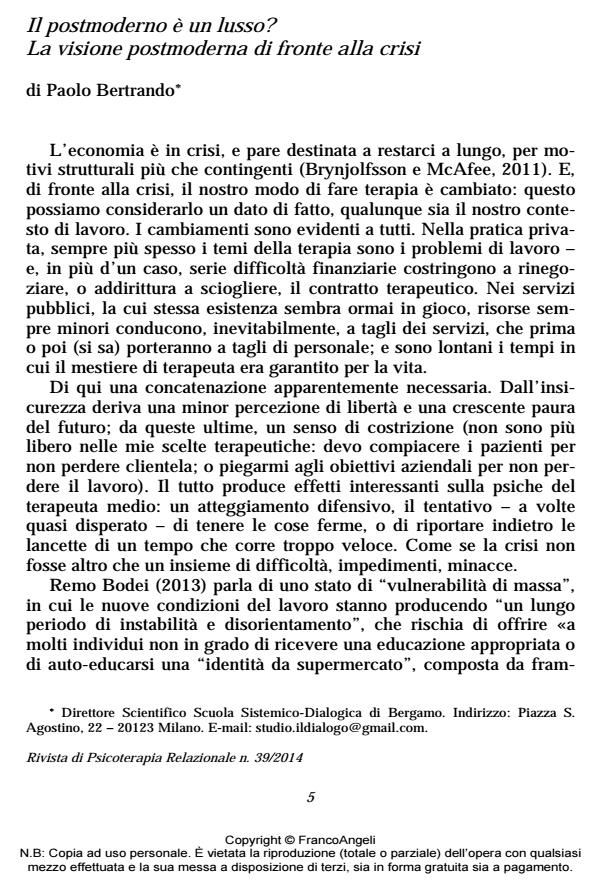Il postmoderno è un lusso? La visione postmoderna di fronte alla crisi
Titolo Rivista RIVISTA DI PSICOTERAPIA RELAZIONALE
Autori/Curatori Paolo Bertrando
Anno di pubblicazione 2014 Fascicolo 2014/39
Lingua Italiano Numero pagine 19 P. 5-23 Dimensione file 85 KB
DOI 10.3280/PR2014-039001
Il DOI è il codice a barre della proprietà intellettuale: per saperne di più
clicca qui
Qui sotto puoi vedere in anteprima la prima pagina di questo articolo.
Se questo articolo ti interessa, lo puoi acquistare (e scaricare in formato pdf) seguendo le facili indicazioni per acquistare il download credit. Acquista Download Credits per scaricare questo Articolo in formato PDF

FrancoAngeli è membro della Publishers International Linking Association, Inc (PILA)associazione indipendente e non profit per facilitare (attraverso i servizi tecnologici implementati da CrossRef.org) l’accesso degli studiosi ai contenuti digitali nelle pubblicazioni professionali e scientifiche
Negli anni recenti, le teorie sistemiche sono state caratterizzate da una prevalenza del postmoderno e del costruzionismo sociale, con una sostanziale identificazione fra terapia e cambiamento di linguaggio o narrazione, in cui ogni problema poteva essere dissolto, più che risolto. L’attuale crisi globale rende necessario un cambiamento di paradigmi teorici. La sfida attuale è costruire modelli che aderiscano a un realismo non ingenuo, accogliendo la necessità di fare i conti con realtà dure e non modificabili, e al contempo salvando quegli spazi di libertà, creatività, resilienza e attenzione alle risorse da sempre patrimonio dell’approccio sistemico. L’articolo prospetta alcune possibili evoluzioni del modello, che permettano di accogliere e rilanciare questa sfida.
Parole chiave:Postmoderno, costruzionismo sociale, modello sistemico, crisi economica.
Paolo Bertrando, Il postmoderno è un lusso? La visione postmoderna di fronte alla crisi in "RIVISTA DI PSICOTERAPIA RELAZIONALE " 39/2014, pp 5-23, DOI: 10.3280/PR2014-039001